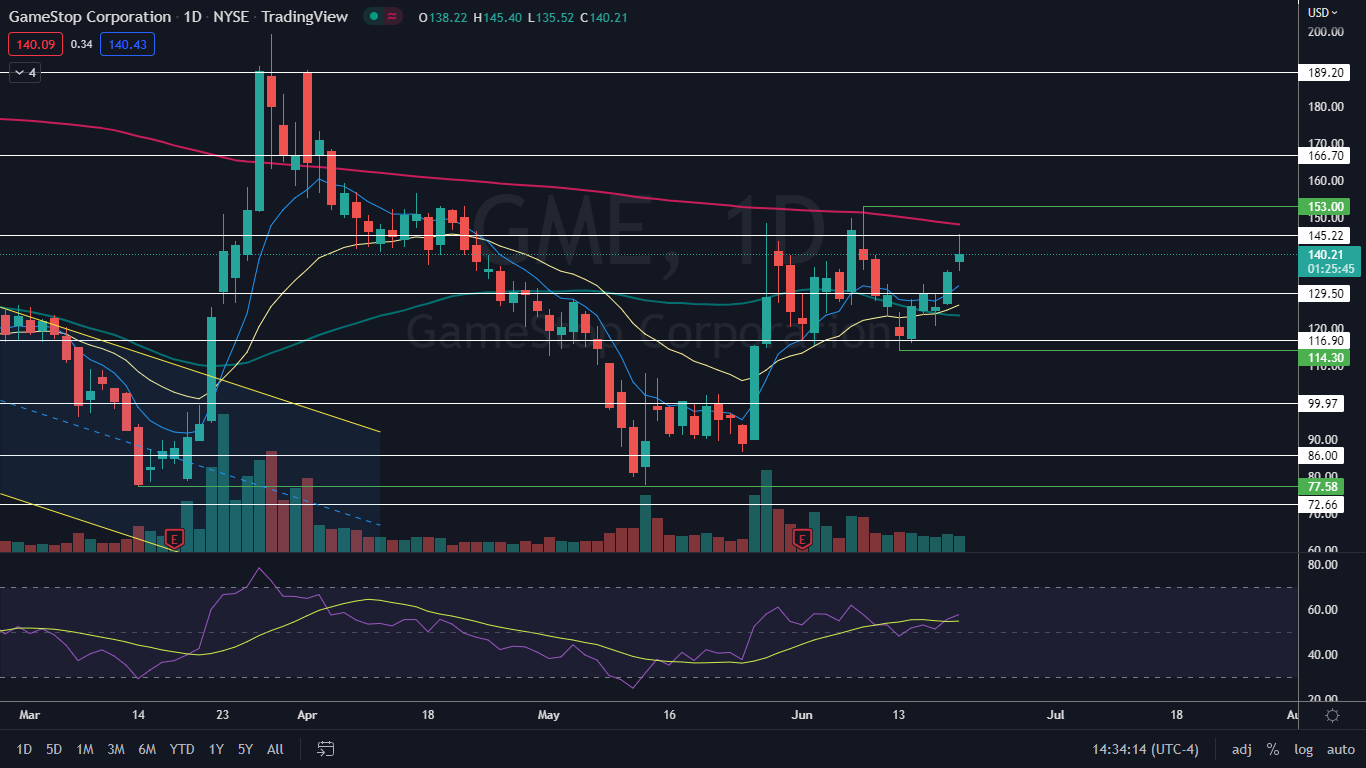
GameStop Corporation (NYSE:GME) surged up 7.59% higher at one point on Tuesday, in tandem with the S&P 500, which was rising about 2.5%.
GameStop has shown strength over the past five trading days, soaring over 20% compared to the general markets, which saw the S&P 500 plunge over 4% between June 13 and June 17.
The rise higher on Tuesday further confirmed GameStop is trading in an uptrend, but the daily candle, which looks set to print with both an upper and lower wick, may indicate the stock is due for its next higher low.
An uptrend occurs when a stock consistently makes a series of higher highs and higher lows on the chart.
The higher highs indicate the bulls are in control, while the intermittent higher lows indicate consolidation periods.
Traders can use moving averages to help identify an uptrend, with rising lower time frame moving averages (such as the eight-day or 21-day exponential moving averages) indicating the stock is in a steep shorter-term uptrend.
Rising longer-term moving averages (such as the 200-day simple moving average) indicate a long-term uptrend.
A stock often signals when the higher high is in by printing a reversal candlestick such as a doji, bearish engulfing or hanging man candlestick. Likewise, the higher low could be signaled when a doji, morning star or hammer candlestick is printed. Moreover, the higher highs and higher lows often take place at resistance and support levels.
In an uptrend the "trend is your friend" until it’s not, and in an uptrend there are ways for both bullish and bearish traders to participate in the stock:
- Bullish traders who are already holding a position in a stock can feel confident the uptrend will continue unless the stock makes a lower low. Traders looking to take a position in a stock trading in an uptrend can usually find the safest entry on the higher low.
- Bearish traders can enter the trade on the higher high and exit on the pullback. These traders can also enter when the uptrend breaks and the stock makes a lower low, indicating a reversal into a downtrend may be in the cards.
Want direct analysis? Find me in the BZ Pro lounge! Click here for a free trial.
The GameStop Chart: GameStop reversed course into an uptrend on June 13 and has confirmed the pattern by printing a higher high and a higher low. The most recent confirmed higher high was printed on June 15 at $131.96 and the most recent higher low was formed at the $120.58 the following day.
- Between Friday and Tuesday, GameStop shot up 15.64% to top out at $145.40. The stock may need to retrace lower and print another higher low before gaining enough power to attempt trading above the 200-day simple moving average, which GameStop rejected as resistance on June 8.
- If GameStop prints a reversal candlestick above the last higher low, it may give bullish traders who aren’t already in a position a solid entry point. If the stock then rises to regain the 200-day SMA as support, a long-term bull cycle for GameStop could take place.
- Bearish traders want to see the stock fall below the $120 level. If that happens, GameStop will negate the uptrend and also lose support at the 50-day SMA and the eight-day and 21-day exponential moving averages, which would be bearish.
- GameStop has resistance above at $145.22 and $166.70 and support below at $129.50 and $116.90.








